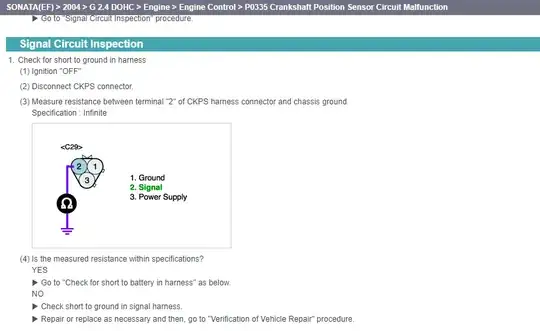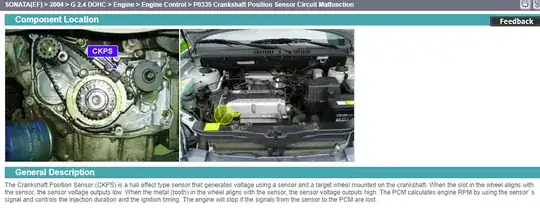The manual states that the ground must be totally insulated from point 2.
The highest range is the correct setting here to begin with. If any resistance (conductance is the better word here) is present, the highest range will give you the best chance to detect it. Additionally, if any resistance is detected at that range, turn the range down to determine the resistance more precisely.
Another useful setting on your DMM is the diode setting, usually located right after the lowest setting (usually 200), either or not incorporated in the 2k setting. I your DMM has it, it's marked with the diode symbol; an arrow with a vertical line next to it. If you use that setting, the number you get represents the resistance, as well as the voltage drop from the positive to the negative probe on your DMM.
Since your crank sensor has labels named supply, ground, and signal, i think your crank position sensor is a semiconductor based one, like many automotive sensors. This means voltage drops are inherent to it's working. Voltage drops tell you more than resistance in the semicondictor world. The highest range may not detect anything that the diode mode does detect. So use them both to get a more complete picture.

